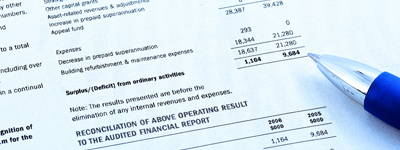The One Big Beautiful Bill Act (OBBBA) has garnered headlines for extending dozens of tax provisions and creating new tax-saving opportunities for individuals and businesses. But it also eases the rules for Form 1099-NEC, “Nonemployee Compensation,” and Form 1099-K, “Payment Card and Third-Party Network Transactions.” These forms are sent to both the IRS and payment recipients. Let’s examine how these forms work and what’s changed.
 Form 1099-NEC
Form 1099-NEC
Of course, all payments received for work by independent contractors are taxable unless a special exception applies. However, the reality is that some contractors may accidentally or purposely omit payments from their tax returns.
Therefore, the IRS requires certain employers to file Forms 1099-NEC when payments are made to independent contractors for business purposes. Previously, payments for nonemployee compensation were reported on Form 1099-MISC, “Miscellaneous Information,” but this form is now reserved for other miscellaneous nonwage payments.
Currently, Form 1099-NEC is required when an independent contractor is paid $600 or more annually. Interestingly, this threshold has never been adjusted for inflation. It has remained at $600 for more than 70 years!
Failing to meet this reporting obligation can be costly. For 2025 forms due to be filed in 2026, the IRS may impose a fine of $340 per form if a required Form 1099-NEC is omitted. For example, if an employer misses ten forms, it owes the IRS $3,400. The maximum penalty is $4,098,500 for large businesses or $1,366,000 for small businesses (defined as those with average gross receipts of $5 million or less for the three most recent tax years before the calendar year).
Even worse, if the violation is because of an intentional disregard of the law, the penalty per form for 2025 forms due to be filed in 2026 is the greater of $680 or 10% of the aggregate amount of items required to be reported — with no maximum limit. Furthermore, if a company draws IRS suspicion, the tax agency may conduct a full-fledged worker classification audit. If the auditor finds that employees have been misclassified as independent contractors, the penalties could easily run into the tens of thousands of dollars.
For payments made on or before December 31, 2025, businesses must file Form 1099-NEC if they pay $600 or more to a nonemployee for services. However, the new law offers some relief for future tax years. Under the OBBBA, the threshold for filing a Form 1099-NEC is more than tripled from $600 to $2,000. This new rule kicks in for 2026 and will apply thereafter. In addition, beginning in 2027, the $2,000 threshold will be indexed for inflation in $100 increments. This should substantially reduce federal reporting obligations for many small companies.
Note also that the OBBBA raises the threshold for 24% backup withholding to $2,000 for 2026 and thereafter. Backup withholding is required when an independent contractor fails to furnish a Taxpayer Identification Number (TIN) or the IRS notifies the payor of a problem with the contractor’s name or TIN. Payors generally solicit a TIN via Form W-9, “Request for Taxpayer Identification Number and Certification.”
Form 1099-K
Form 1099-K reports payments from payment card companies, payment apps and online marketplaces. If your customers pay you directly by credit, debit or gift card, you’ll get 1099-K forms from the payment processor or payment settlement entity, no matter how many payments you got or how much they were for.
However, different reporting rules apply if customers pay you through a third-party settlement organization (TPSO), such as PayPal or Venmo. When Form 1099-K was introduced in 2011, TPSOs had to report payments for goods or services only if the recipient earned more than $20,000 through more than 200 business transactions annually. Thus, reporting often wasn’t required for casual or occasional transactions.
TPSOs are often used to facilitate payments from customers and to independent contractors, including workers in the gig economy. But the tax reporting rules aren’t limited to the most popular online apps. They also extend to:
- Online auctions or marketplace services (for instance, eBay and Amazon),
- Gig economy platforms (for example, Uber and Airbnb), and
- Ticket exchange or resale sites (for instance, Ticketmaster).
The American Rescue Plan Act of 2021 (ARPA) imposed new rules that effectively would have increased the reporting responsibilities for TPSOs. Beginning in 2022, the ARPA lowered the threshold for filing Forms 1099-K to just $600, regardless of the number of transactions.
Public opposition to the change was swift. The IRS postponed implementation twice before settling on a phase-in of the new threshold, which began in 2024. The schedule was $5,000 in 2024, $2,500 in 2025, and $600 in 2026 and thereafter. Under these rules, the number of transactions no longer mattered.
The OBBBA permanently repeals the ARPA thresholds for TPSOs and restores the previous thresholds of $20,000 and 200 transactions. This change is retroactive to 2021. So TPSOs don’t have to cope with the $2,500 threshold for 2025.
Important: Even though the previous threshold has been restored, recipients should continue to track all TPSO and card-based payments. You must report all taxable income, regardless of whether you receive 1099-Ks.
To illustrate, in 2025, a business is paid $30,000 through Venmo but has only 150 transactions. In this situation, Venmo isn’t required to file Form 1099-K. Similarly, no Form 1099-K is required for a business that receives only $15,000 through 300 transactions. Under the restored rule, both the dollar and transaction thresholds must be met.
Keep in mind that some states may have reporting requirements that differ from the federal rules. Contact your tax advisor to determine the requirements in the states where your business operates or files returns.
No Assumptions
The OBBBA simplifies the reporting requirements for IRS Forms 1099-NEC and 1099-K under some circumstances. However, compliance is still important. Don’t make any assumptions about your business’s situation. Work with your CPA to ensure that you’re up to date on all the latest developments.








